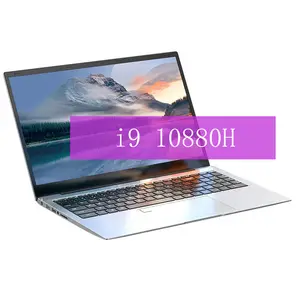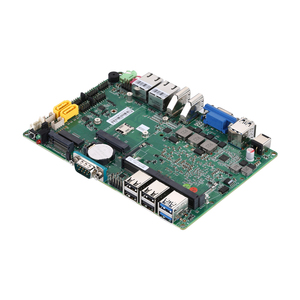(528 products available)





















































































































































































































The Intel Core i7 6th Gen is divided into three categories as shown below:
While the Intel Core i7 6th generation CPU can perform various computing tasks, its features and functionalities may vary depending on the manufacturer. Here are some of the common features and functions:
Virtualization technology
This technology allows multiple virtual machines to be created. The Intel Core i7 processor uses hardware-assisted virtualization features, which include VT-x and VT-x. VT-x offers basic features for virtual machine creation, while VT-d provides device assignment and memory access protection for virtualization software.
M.2
Most modern generation processors come with a new storage architecture known as M.2. The Intel i7 processor features an interface of M.2, which improves the accessibility of solid-state drives (SSDs) and other devices. M.2 provides a faster and efficient way to connect add-in cards as a module on the motherboard, supporting PCIe and SATA interfaces.
Instruction set
The i7 6th generation processor instruction set architecture plays a significant role in enhancing processor performance. It consists of x86_64, a 64-bit implementation of the x86 architecture, giving access to 64-bit and additional instructions for improved performance.
Intel Turbo Boost Technology
This is a patented technology by Intel that enhances the performance of workloads and demanding processor tasks. If the i7 processor is running at base power, Turbo Boost technology increases performance automatically, providing more frequency if it's within voltage/frequency limits. For example, the i7-6700 boost clock speed can go as high as 4.2 GHz.
Enhanced SpeedStep Technology
This is another patented technology by Intel that dynamically adjusts processor voltage and core frequency alongside changing workload and power consumption. Enhanced SpeedStep technology optimizes performance-per-watt by combining low-frequency sleep states with higher frequencies for demanding tasks.
Thermal Monitoring Technologies
The thermal monitoring technologies of the i7 6th gen help manage its temperature in various operating environments. They include the Intel Dynamic Tuning Technology, which optimizes performance by managing power and thermal conditions. DTS (Digital Thermal Sensor) monitors processor temp around the core and helps regulate it.
Compatible chipset
All processors must have a compatible chipset to function effectively. The i7 6th Gen processor is compatible with several chipsets, including Intel 100 series chipset, Intel Z170 chipset, Intel H170 and H110 chipset, and skipped the 5 series, making it one of the first supported processors on the 6th generation.
A 6th generation Intel i7 processor offers excellent performance for various activities, making laptops or PCs with this CPU ideal for both regular consumers and business clientele. Since there are many possibilities for using PCs and laptops, it would be helpful to have a list of some of the commonly known activities that can be performed by users. They include;
Core Count:
If the user needs to perform simple functions like browsing, watching videos, and using educational programs, dual-core or even single-core processors will do the job. However, for tasks such as gaming, computer programming, 3D rendering, and other professional activities, four cores or more are highly recommended, as the higher core count allows for better multitasking and improved performance for demanding applications.
Clock Speed:
The speed at which a CPU can execute tasks and perform calculations is known as clock speed. i7 6th gen processor models follow a particular pattern. The standard clock speeds range from 2.4 GHz to 4.0 GHz, but this can be higher or lower depending on the specific model. The base frequency is the normal speed of the CPU without overclocking, and i7 processors come with an Intel Turbo Boost Technology. This technology automatically increases the clock speed of the processor when there is a need for more power, as long as the CPU temperature and power consumption stay within safe limits. Generally, higher clock speed gives better performance, but that can vary depending on the specific model and architecture.
Thermal Design Power (TDP):
The Thermal Design Power, or TDP, tells how much heat the CPU will produce under a normal workload. This helps determine the kind of cooling system needed for the processor. Lower TDP values show good energy efficiency and mean less heat is generated, but it also shows less power handling. On the other hand, higher TDP values indicate that the processor can use more power and perform better, but it will produce more heat. That will also mean higher energy usage. An i7 6th gen laptop processor will usually have a TDP between 15W and 95W, depending on the processor model. Processors with lower TDP are better for small computers (known as laptops or ultrabooks) because they use less battery power and create less heat, which helps them stay small and lightweight. In contrast, processors with higher TDP are more suited for big desktop computers since they are able to deliver better performance.
Integrated Graphics:
Integrated graphics are like small video graphic processors built right into some CPUs that let computers show pictures and play videos without needing a separate graphics card. All the i7 6th gen processors have integrated graphics thanks to a feature called Intel HD Graphics 530. The ability of these integrated graphics is good enough for regular users, such as watching videos, editing pictures, and casual gaming. However, for people who do demanding visual tasks or use programs that require intensive graphics work, it is better to get a dedicated GPU or graphics card since dedicated graphics offer a significantly higher performance level for optimized visual tasks.
Processor Size:
Newer generations of processors tend to perform better, even if their specs are the same as older models. This means that the 6th gen Intel i7 processor could perform better than an i7 processor from a different brand with the same specs. However, the exact performance comparison will depend on other features and the specific models being compared.
Q: How much power does the i7 6th gen CPU consume?
A: The i7 6th gen processor has a TDP (Thermal Design Power) ranging between 15-35 watts for mobile and 35-91 watts for desktop processors. The exact power consumption depends on the model and workload. A higher wattage indicates more powerful processors.
Q: Does the 6th gen Intel processor support virtualization?
A: Yes, the 6th gen Intel CPUs offer support for various virtualization technologies. These include Intel VT-x and VT-d, which enhance virtual machine performance and provide direct device access capabilities. Thus, improved performance and features for virtualization tasks are enabled.
Q: What is the significance of the i7 6th Gen Processor Benchmark?
A: Benchmark scores provide insights into the real-world performance of a CPU. They help in comparing processing speed, multi-core performance, single-core performance, and other performance-related tasks among various 6th generation Intel processors.
Q: Does the i7 6th gen processor support ECC memory?
A: Error-correcting code (ECC) memory is an essential type of RAM for servers and workstations. It detects and corrects memory errors to ensure data integrity. The i7 6th Gen processor does not support ECC memory.